|
Secondary storage is also known as
backing storage
Speed is less important than large storage
capability.
Eg : The time a computer takes to access data stored on
a hard disc is measured in thousandths
of a second, whereas for RAM it is measured in thousand-millionths
of a second (nanoseconds).
The most frequently used backing storage media are...
- magnetic tape
- magnetic disk
- optical disk (CD-ROM ; DVD)
- flash memory
| Magnetic Tape |
Commonly used for backup and
archiving. |
|
Tape cartridge
(DLT or DAT Tape) |
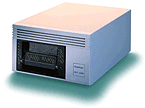  |
Possible 320 Gb of data on a single tape. |
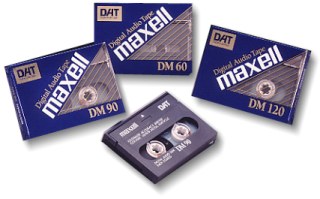 |
| Magnetic Disc |
Fast storage
and access to data. |
|
| Floppy disk |

|
Portable...soon to only be found in museums! |
| Hard disk |
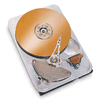
- Available in several sizes (500Gb is possible)
- Permanently enclosed in their drive mechanism
- Some drives are external and plug in to the USB port.
How do they work? - info here. |
Faster to store and load than
floppy disk;
Sealed; Internal drives are not portable. |
| ZIP |

Special ZIP drive needed. Up to 750 Mb on one disc.
 A ZIP drive. A ZIP drive.
|
Portable data
Popularity is fading with the introduction of flash
drives.
|
| RAID |
Redundant Array of Inexpensive
Drives.
Used to improve reliability. A number of disks are used as one logical
unit.
The idea is...if one disc crashes, no
data is lost because it can be recreated from the other discs.
Increased reliability - so often
used on file servers.
|
|
| Optical Disks |
Laser technology is used to
read data. |
|
CD-ROM
DVD |

|
High capacity and portable. |
- Older CD standard stores up to 650 Mb
- DVD stores up to 17 Gb
|
CD-R
DVD-R |
A CD-writer (or DVD writer) is needed to store data on a CD. |
|
CD-RW
DVD-RW |
Rewritable CDs and DVDs can be
used to record data many times. |
|
| Flash memory |
A flash memory chip stores the data |
|
| USB Memory stick (USB Flash
drive) |
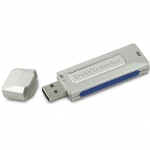
|
Portable storage
media. It can be plugged into the USB port of any computer.
Typical storage...up to 8Gb
|
| |
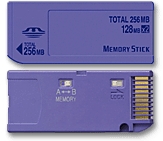
|
Memory cards can be used in digital
cameras to store pictures. |
|








 A ZIP drive.
A ZIP drive.

